Month 11:29, Week 4:7 (Shibi'i/Sukkot), Year:Day 5955:324 AM
2Exodus 9/40
Gregorian Calendar: Sunday 19 February 2023
Book of Revelation XLVII
The Seven Shofar Judgments VII
Interlude III: The First Beast, Part A
(Revelation 13:1b-10)
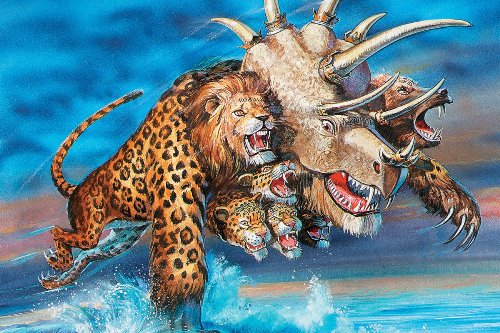
Continued from Part 47
Introduction
Shabbat Shalom kol beit Yisra'el and Mishpachah and welcome to Part 47 of our Book of Revelation series of studies. Today we move on to the next phase of the third Interlude but before we do that I would like to have one of my broad-sweep reviews.
Overview
We have spent four sessions looking at the chapter 12 segment about the Dragon's war against, first, the Remnant and then, having failed to destroy that, on the rest of the qodeshim (saints, set-apart ones). What we haven't done yet is separate out the various false interpretations that have been made over the centuries. I grant you this is far from easy but we have got to do it, for the sake of those trapped in them because it is blinding them to important elements that may be critical for the safety and spiritual prosperity of the last generation. Chapters 13 & 14, which we are now about to tackle, are an integral part of the chain of events which I now want to briefly preview in connection with chapter 12. So let's step back and look at the panorama.
The Evil Triple Alliance
Chapters 12-14 introduce us to three persons who form an alliance to rule the world in place of the rightful Ruler, King Yah'shua (Jesus). One is angelic in origin and nature: a 'great dragon' and 'ancient serpent', otherwise known as 'the Satan' or 'the Devil' (Rev.12:9). The other two are human in origin and nature; two 'beasts' otherwise known as the Anti-Messiah/Antichrist (1 Jn.2:18), also known as 'the man of Torahlessness or lawlessness' in 2 Thessalonians 2:3, and 'the false prophet' (Rev.16:13; 19:20; 20:10). Together they form a kind of 'unholy trinity' in a ghastly triune mimicry of Yahweh the Father, Yah'shua (Jesus) the Son and the Ruach haQodesh (Holy Spirit).
Satan Appears
Satan is introduced into the 'troubles' for the first time. He hasn't been mentioned in Revelation since the letters to the seven assemblies or congregations of Revelation 2:9,13,24 and 3:9). So his appearance only now, 8 to 9 chapters later, is significant because it means he is becoming more visible. Before, only his proxies were in view, but now we're seeing the actual evil power behind them. Seals and shofars or trumpets have loosed their burdens on the earth, while Satan has principally been 'in heaven' making accusations against Yahweh's servants like Job. There he has had full access to the heavenly realms (Eph.6:12; co. Job 1:6-7) where the real battle between good and evil is being fought, as anyone entering these realms through prayer will discover. He's still 'there', in one sense, but in another he's now 'down here' because of the nature of the battles being fought. Let me explain.
A War Being Fought in Two Different Dimensions
The battle in heaven (properly translated 'heavens' - we'll come back to this important distinction later) is solely between malakim or angels; the battle on earth (where he is also 'being cast' and where, in one sense, he has already 'been cast, in the past tense) is between Satan plus his fallen malkim (angels) or devils, and us, mankind, and especially the Messianic Community who are a constant reminder to him of his defeat at Calvary, something that enranges him because it reminds him that his time is short (1 Cor.7:29). So there is a war being fought simultaneously in two different dimensions, one 'up' there and one 'down' here. When we read of Satan being 'cast out' we must bear in mind these two parallel realities.
Satan Thrown Down
As far as the battle in the shammayim or heavenlies is concerned, the forces are unequal in number. The Devil's side comprises one third of the heavenly host (angelic realm) (Rev.12:4); two-thirds are led by the archangel Michael, who will lead Yahweh's forces to victory. In the final act of this great conflict, though he is already 'here', and has been 'here' since the beginning, Satan will be 'hurled' down to the earth, into space-time-matter. Remember this idea of 'up' and 'down' is symbolic and should not be viewed too literally. For one, planet earth is literally a sphere, not a flat plane (see flat-earthism) but it is 'flat' only symbolically to create the sense of spiritual positionality, like being at the top of a mountain versus being in the valley below. Remember, heaven and earth occupy the same physical space but are 'located' in different dimensions.
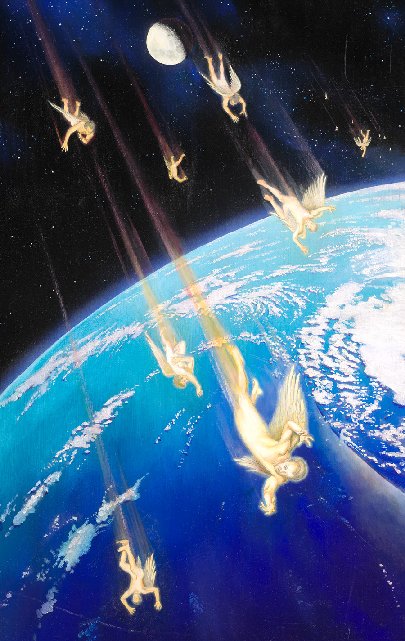
Into the Core of the Earth
Thus to be 'thrown down' is, viewing this from our globe earth, to be thrown into the core of the earth which as we now know is literally a 'fiery' place, the physical molten mass or core, thus matching the 'fiery' nature of hell and the 'abyss' itself (Rev.20:3). So whether a devil is thrown 'down' here in Sweden or 'down' in Australia (or anywhere else on the earth) the desitination is still the core or the bottom of the very deep pit...deep in the sense that the core of the earth is a very long way 'down' through solid matter. Two thousand years ago John's readers didn't have the scientific knowledge that we have now so we can extrapolate based on what we now know about geology which they didn't. For them, who knew relatively nothing about astronomy and science, 'up' and 'down' were simply visual pictures for someone earth-bound and 'looking around'.
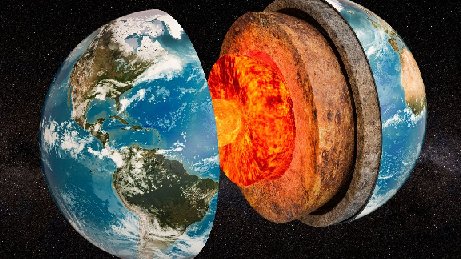 Hell is located in the parallel 'space' where earth's molten core lies
Hell is located in the parallel 'space' where earth's molten core lies
Taking the War to Yahweh's People
Meanwhile in the few years he has left, Satan's fury and frustration are largely focussed on the planet's surface, since the war against Yahweh and His malakim (angels) in the heavenlies - the spiritual dimension - was already a failure by the late first century AD. He has nothing more to say in the way he did in Job's day, for example, at least in respect to the First Coming and his failed attempts to frustrate that. Unable now to challenge Yahweh directly because of his defeat at Calvary, he declares exclusive war on Yahweh's people 'below' on the surface of the earth. It's a rearguard action, like the retreating German and Japanese Armies in Russia and the Pacific, respectively, from 1942/3 onwards, undertaken in the hope of, at the very least, retaining his kingdom on earth, through puppet rulers - political and religious - just a little bit longer. For the last 2,000 years it has simply been a case of him of 'enjoying the war while it lasts' because that's all he can now do, causing as much death, misery and destruction before his penultuimate defeat. (Remember, he will be released one last time at the end of the Millennium and then it will be permanently over for him).
The Figure of the Pregnant Woman
I hope we can agree that the message of chapter 12 is quite clear, even if it may stretch the imagination at times. But in this present overview we have so far (deliberately) overlooked the other major figure in the drama - the pregnant woman, bathed in sunshine, standing on the moon and wearing a crown of 12 stars on her head. Who is she? Well, we have already answered that in Part 44, when we asked whether she is an individual person or the personification of a place or a people like the other 'women' in the Book of Revelation - for example, the 'prostitute' representing Babylon in chapters 17-18.
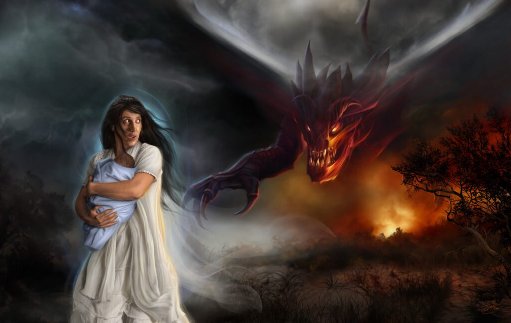
Mary or Israel?
And as we saw back in Part 44, this female figure has been the source of much debate and many differences of opinion among Bible students. For some, the matter is settled by the fact that the Devil wanted to 'devour her child the moment it was born' (v.4) and the statement that 'she gave birth to her son, a male child, who will rule all the nations with an iron sceptre' (v.5). Surely, they argue, this is an unmistakable reference to the birth of Yah'shua (Jesus) Himself and Herod's immediate but abortive attempt to destroy Him. The 'woman' is therefore His mother, Mary, they claim, which is the usual Catholic interpretation, as we have seen; or, others will say, she is a personification of Israel, the nation from whom the Messiah came, which is a common Protestant interpretation to deliberately exclude Mary. And we agreed that 'she' had to be Israel because even though Mary is, of course, included as part of that symbol, for in one sense Mary becomes Israel as a whole as the instrument of incarnation.
Various Views Considered
But it's not quite so simple, as I now present you with another consideration. Why should there be a sudden and unexpected 'return' to the very beginning of the Messianic Era in the middle of a passage describing the very end of the 'end times' (remembering that the 'end times' began 2,000 years ago)? Why bring Mary into the picture (since from Acts 1 onwards she disappears entirely from the story line, her work completed...unless you include the 'elect lady of 2 John 1 and regard her as a crytpic reference to Mary, which we understand to actually be a veiled reference to the Messianic Community (Church) either generally at a time of great persecution or to a particular congregation of the Messianic Community, remembering that the three epistles of John were written after the Book of Revelation was written? (Mary is, in a sense, the bridge between Old Covenant Israel and New Covenant Messianic Israel). Now, as we saw way back at the beginning of this course, the 'cyclical historicists' would see this as proof of yet another 'recapitulation' of the entire cycle of 'Church history', this time starting with the nativity, Satan being defeated and exiled from heaven at that time. And at a certain level there may be truth in this, but there are problems with this view.
Mary's Other Children
For one, we're told that the child is 'snatched up to Elohim (God) and to His Throne' almost immediately after His birth. Now, this could well be a 'telescoping' of the incarnation and ascension or Christ, but the absense of any reference to the ministry, death and resurrection of Yah'shua (Jesus) inbetween is something we should pause to consider. And if the woman is His mother, who, then, are 'the rest of her offspring' to whom the frustrated dragon turns his attention in verse 17? Yes, we know she had other children through Joseph, including four boys and some girls (Mk.6:3), but I think you'll agree they are unlikely candidates, even though Yah'shua's (Jesus') half brother James rose to prominence in the ministry.
The Symbol of the Echad Bridegroom and Bride
So if Mary's children are in view, it can only possibly be in a vague, secondary, shadowy sense. Nor is is certain that 'ruling the nations with an iron sceptre' necessarily points to Yah'shua (Jesus) because whilst it is certainly applied to Him in Revelation 19:15 in fulfilment of Psalm 2:9 as we've already seen, it is also promised to His faithful followers in Revelation 2:27. Not that there's any problem with both of these being true, as the Bride and the Bridegroom are echad or one; a married couple, while two distinct persons, are simultaneously regarded as one person ('one flesh') as far as their works are concerned. And though the Bride consists of many persons, as in a polygamous relationship, being echad (one) is still on the cards whether they are literal or symbolic 'wives'. So there is no problem with both these propositions being simultaneously true. Then there is the matter of the preservation of the woman 'in the desert' for 1,260 days or 3½ years (Rev.12:6), a period which has already emerged as the duration of greatest distress at the end of the Messianic Æon (Age).
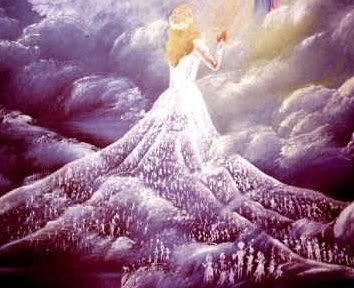 The echad Bride of Christ is one and many...
The echad Bride of Christ is one and many...
The Best Fit Theology in a Nutshell
Whilst most of these interpretations can be, and are, true on different levels, in the most literal sense, the interpretation that best fits all the known data suggests strongly that this 'woman' is a personification of the Remnant of the Messianic Community (Church) in the end times, preserved (not 'raptured') outside the urban areas during the worst troubles and eventually gathered as the Twelve Tribes of Israel preparatory to their relocation to the Promised Land prior to Yah'shua's (Jesus') physical arrival. Her man-child is also a personification, representing both the martyred believers at this time, safe in heaven out of Satan's reach, and 'the rest of her offspring' who are gathered into heavenly-minded cities of refuge on the earth during the Great Tribulation who are spared the holocaust of believers. Those in heaven will return, resurrected, one day, joining those who remained on earth who will be resurrected "in a flash, in the twinkling of an eye" (1 Cor.15:52, NIV) as both meet in the sky for a brief moment, to then return to earth, on the same day (and likely in the same hour) for the inauguration of the Millennial Kingdom of our Elohim (God), to become its rulers with Messiah, something that is emphatically declared in Revelation 20:4. Now this interpretation may, arguably, have some minor tensions with the text, but it is, I would like to suggest to you, the undoubted 'best fit'. It takes all possible angles into consideration. Let's just say it has far fewer tensions than with any other explanation and takes into account all aspects, layers and cycles. What do you think? We'll look at some of those 'minor tensions' in just a minute.
The Shared Marriage Theme of the Saviour & the Saved
So, to round off this 'big overview', may I further point out that there seems to be an implied comparison between the experience of Yah'shua (Jesus) at the beginning of the messianic era and that of His followers at the end of it (you'll see this shared marriage theme repeating again and again which is a clue as to the eternal nature of marriage and why, at least after the resurrection, 'once joined by Elohim (God), always joined by Elohim (God)'. You see, the allegory of Messiah being permanently married to His Bride is a reflection of the intention that human marriage be permanent too since the one is being used as an illustration of the other. The Saviour said:
"'Haven't you read...that at the beginning the Creator 'made them male and female,''...'For this reason a man will leave his father and mother and be united to his wife, and the two will become one flesh'? So they are no longer two, but one. Therefore what Elohim (God) has joined together, let man not separate'" (Mt.19:4-6, NIV).
Mutual Overcoming & Mutual Dying to Everlasting Life
That is why so many of the prophecies about Christ are simultaneously about His Bride (the Messianic Community/Church) too, because we share in all that is of Him and is His, as married people do. That is why the Man-Child is, firstly, Yah'shua (Jesus) in the first phase of the prophecy, and secondly, the Remnant-Body in the second. Notice, in that connection, that in particular, in the same way Yah'shua (Jesus) 'overcame' (Jn.16:33) in the beginning, so His followers at the end will also 'overcome', not 'loving their lives so much as to shrink from death' (Rev.12:11). There is a deep emet (here) about marriage, how wives come to resemble their husbands as a fruit of their intimate identity with them; and how marriage, whether of the simple (monogamous) or complex (plural) kind (they're two sides of the same coin), are supposed to reflect that Divine Unity of the Bridegroom with His Bride.
 Individual and corporate overcoming is learned in the wilderness of trials
Individual and corporate overcoming is learned in the wilderness of trials
Taking on the Identity of the Bridergroom
The Bride takes on the identity of the Bridegroom, as well as His Name, Covering, and all that is Him; and this is why the seven women of Isaiah 4 seek out a man with a shem tov or good name because it is his identity - his godly character - they desire above all else. We as the Messianic Bride aren't supposed to be seeking out our own identities independently of Him, but seeking for His identity, as our identities become swallowed up and shared in Him. Believers who have that identity in Messiah are in turn supposed to do the same thing with their natural spouses following the same divine tavnith or pattern.
The 'Mystical Marriage of Messiah'
This is what we, as Messianic Evangelicals, mean by the Mystical Marriage of Messiah (MMM or the 3 M's) and therefore by Holy Echad (Oneness) Marriage too because it simultaneously runs alongide, and in, sanctification in Christ. No marriage can become eternal without the correct tavnith (pattern) being followed. The Book of Revelation is teaching just that, another reason it's a doctrinal sifter. It is a New Covenant Melchizedek document about marriage forever as opposed to an Old Covenant Aaronic, Levitical or Mosaic document which is about marriage 'until death do us part'. When we die we shall forever be in, and with, Christ, and if we have followed the correct pattern, we shall be with our literal spouses forever too, bound together by Him and in Him, because all that is good, holy, beautiful and pure is held together forever. This includes, on another level, all our lovely cultivated friendships as well as, I dare say, our connections to pet animals who have assumed something of our character while on earth. Isn't this a wonderful picture of bliss - of blessedness?
The Victory of the Overcomers
This, then, is the victory of the overcomers which the Book of Revelation celebrates so enthusiastically. This victory of the qodeshim (saints, set-apart ones) demonstrates "the kingdom of our Elohim (God), and the authority of His Christ" (Rev.12:10; cp. 11:15 & Ac.28:31). You see, the Book of Revelation is, at its beginning with those young congregations in Asia Minor, and at the end with the victory of Messiah and His Qodeshim (Saints, Set-apart Ones), about those who patiently endured to the end, overcoming in Yah'shua (Jesus).
REVELATION 13:1-10
cp. Daniel 7 & 4 Ezra/2 Esdras
With that, I hope, encouraging overview let's plunge straight into today's text segment, the first ten verses of chapter 13:
"[12:18/1a 'Then the dragon (Heb. 'nachash' - OJB) took his stand on the seashore' - NRSV]. 1b And I saw a beast ('monster' - KNT; 'animal' - JBP; Heb. chayyah - OJB) rising up out of the sea (Dan.7:3), having seven heads (Heb. 'roshim' - OJB) and ten horns (Dan.7:7; Rev.15:2; 16:13), and on his horns (Heb. 'karnayim' - OJB) ten ('royal' - Barclay) crowns (Heb. 'asarah' - OJB; 'coronets' - JB; 'diadems' - NRSV, ESV, RNAB, NASB), and on his heads a blasphemous name (Heb. 'Chillul haShem gidufim - OJB; 'blasphemous titles' - JB; 'blasphemous names' - NRSV, ESV) (Dan.11:36; Rev.17:3). 2 Now the beast ('monster' - KNT; 'animal' - JBP) which I saw was like ('resembled' - NIV) a leopard (Dan.7:6), his feet were like the feet of a bear (Dan.7:5), and his mouth like the mouth of a lion ('lions' - HRV) (Dan.7:4). The dragon (Heb. 'nachash' - OJB) gave him ('assigned to the beast' - Barclay) his power, his throne, and great ('worldwide' - JB; 'far-reaching' - Barclay) authority (Rev.2:13; 16:10). 3 And I saw one of his heads as if it had been mortally (fatally) wounded (Gk. 'the plague of its death', 'death-blow' - NRSV; 'wounded beyond recovery' - NLT), and his deadly wound was healed (Aram. 'he was raised from the wound of death' - HRV). And all the world marveled ('was in awe' - NLT; 'in amazement' - NRSV; 'was amazed' - NASB; 'in fascinated wonder' - Barclay: 'astonished' - NIV) (Rev.17:8) and followed the beast ('monster' - KNT; 'animal' - JBP). 4 So they worshiped the dragon who gave authority ('memshalah' = 'governing authority', OJB) to the beast ('monster' - KNT; 'animal' - JBP); and they worshiped ('prostrated themselves in front of' - JB) the beast ('monster' - KNT; 'animal' - JBP), saying, 'Who is like ('can compare with' - JB) the beast ('monster' - KNT; 'animal' - JBP) (Ex.15:11) {a parody of the name Michael, 'Who-can-compare-with-Elohim/God'}? Who is able to make war with him?' ('How could anybody defeat him?' - JB) 5 And he was given a mouth speaking great things ('matters' - ISRV) and ('arrogant' - JNT; 'haughty' - NRSV, ESV, OJB; 'use grandiloquent language' - Barclay) blasphemies ('terrible words of blasphemy' - NLT; 'arrogant words and blasphemies' - NASB; 'allowed to speak monstrous blasphemies' - JBP) (Dan.7:8,11,20,25,36; 2 Thess.2:4), and he was given ('allowed to exert' - JBP) authority to continue for forty-two months (3½ years) (Dan.7:25; 9:27; 12:7; Rev.11:2). 6 Then he opened his mouth in blasphemy ('poured out blasphemies' - JBP; 'poured out a torent of insults' - Barclay) against Elohim (God), to blaspheme His name, His tabernacle (Heb. 'Mishkan' = 'dwelling place' - OJB, KNT, ESV, JBP; 'Sh'khinah - glorious manifest presence' - JNT; 'heavenly Sukkah/Tent' - JB, IRSV; 'temple' - NLT), and those who dwell in heaven (Rev.12:2). 7 It was granted to him to ('fight' - ISRV) make war (Heb. 'milkhama' - OJB) (Dan.7:21; Rev.11:7) with ('against' - NIV) the qodeshim (saints, set-apart ones) ('God's dedicated people' - Barclay; 'holy ones' - RNAB) and to overcome ('conquer' - NIV, Barclay) them. And authority (Heb. 'samchut' - OJB) was given him over every tribe (Heb. 'shevet' - OJB), tongue (Heb. 'lashon' = 'tribe' - OJB), and nation (Heb. 'goy' - OJB) (Dan.7:21; Rev.5:9; 7:9; 10:11; 17:15). 8 All who dwell on the earth ('the whole population of the world' - Barclay) (Rev.3:10) will worship him, whose names have not been written in the Book (Dan.12:1) of Life ['which is'] of the Lamb (Jn.1:29)
slain ('slaughtered' - JNT; 'sacrificial Lamb' - JB) (Is.53:7; Rev.20:12) from the foundation ('creation' - NIV) of the world (Heb. 'ha'Aretz' - OJB; 'earth' - KNT; 'written in the book of life of the Lamb (Heb. 'sefer haChayyim' of the 'Seh' - OJB) slaughtered from the foundation of the world' (Heb. 'lifnei hivvased tevel' - OJB) - NKJV fn) (Ex.12:3; Is.53:7; Mt.25:34). 9 If anyone has an ear, let him hear ('Let the listener hear this' - JBP) (Rev.2:7). 10 He who leads into captivity shall go into captivity ('If anyone is to be taken into ['destined for' - JBP, RNAB, NASB] captivity, into captivity they will go' - KNT, ESV, Barclay; 'the people who are destined for prison will be arrested and taken away' - NLT); he who kills with the sword (Heb. 'chevel' - OJB) must be killed with the sword ('those who are destined for death ('to be slain' - ESV) will be killed ('slain' - NLT, Barclay) (Jer.15:2; 43:11; Mt.26:52). Here is the patience ('constancy' - JB; 'endurance' - NRSV, ISRV; 'gallantry' - Barclay; 'perseverance' - NASB; Heb. 'savlanut' = 'patient endurance' - OJB) and the faith ('faithfulness' - NIV; Heb. 'emunah' - OJB) (Heb.6:12) of the qodeshim (saints, set-apart ones) (Rev.14:12)" (Rev.13:1b-10, NKJV).
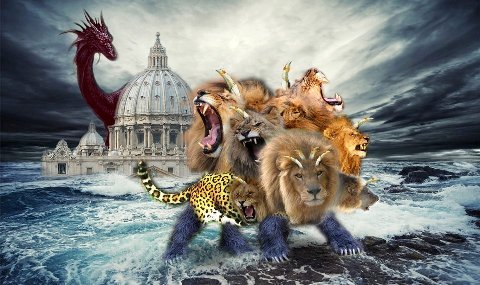
Taking a First Century Perspective
What we're going to do is divide the study of this segment into two studies over this week and next; this week I want to read this as an end-of-the-first century Christian/Messianic would understand it in the context of the first century of the Besorah (Gospel) - from the point-of-view, say, of a Greek or Roman convert living in one of the Seven Congregations of Asia Minor (to whom, remember, this book was originally addressed) as well as to someone living in Rome or indeed anywhere in the Roman Empire at that time. Then next week I want to look at these verses from the persepective of a Hebrew Israelite living at that time but with the hindsight of prophetic history with which the Book of Revelation is closely linked, namely, the Book of Daniel. So today I want to make this a general 'overview' in line with the theme that we started off, and next week I want to dissect some of the more important verses in detail and compare them, first, with the 7th chapter of the Book of Daniel (which is very much in John's view as he's writing this segement); and, second, then make some comparisons with some fascinating apocryphal writings found only in Greek and Slavonia Bibles (not in our Protestant Bibles and not even in Catholic Bibles except, in part, in the Appendix of the Latin Vulgate translation of Jerome).
An Excursus into 1 & 2 Esdras
These apocryphal books are known as 1 & 2 Esdras, but particularly 2 Esdras, which I doubt most of you have heard of unless you're from an Eastern Orthodox background: their importance lies in the fact that they give us insights into the way the Judeans were thinking about Daniel and related material and it's always a good idea to get a thorough historical perspective before making an interpretation in a time as far removed as theirs. This is all part of the way in which we interpret using Critical Realism; if we don't know how John's contemporaries interpreted Daniel 7, which today's segment draws heavily upon, then we're unlike to know how John's readers would have understood the Book of Revelation either. Only after we have done this shall we consider how Revelation 13:1-10 applies to us today and to the future Anti-Messiah or Antichrist, and look into the whole business of prophetic cycles. I think this is the only safe way of doing exegesis (Scriptural exposition) of such a complex text as the Book of Revelation which involves a very particular mindset with which we in the 21st century have absolutely not been brought up with. This is the only way to avoid indulging in the kind of modernist and postmodernist fantasy and speculation that is the curse of our own era.
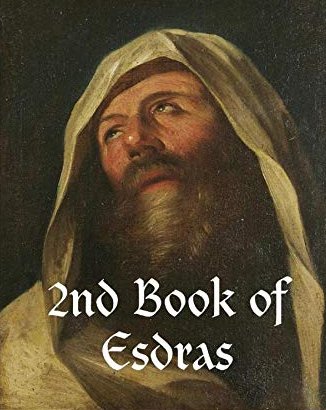
A Detailed Analysis of the Text Segment
To those of you who are listening to today's teaching viva voce (live) or later on video I would please ask you, between now and next week, to take a careful look at the text of today's passage which you'll find on the website article because it contains dozens of explanatory notes, alternative readings and scripture references along with the meaning of some Hebraicisms in the text that might not be immediately obvious to the casual reader. For instance, verse 6 is a parodoy of the meaning of the name, in Hebrew, of the archangel Michael which a Jewish reader would have immediately spotted. Those Judahite converts in the Asia Minor assemblies would have immediately pointed this out to the Greek and Roman believers and thus explained to them what John meant.
The Need for Some Expertise
I just wanted you to be aware of this, not just for today's study but as a general reminder that we must do this when interpreting all Bible texts. That's why congregations are given teachers (Eph.4:11) to help lay-members see these things, for while the Bible certainly interprets itself, and whilst the Ruach (Spirit) is a critical aid in discernment, not everyone in truth is 'Spirit-led' even though those born-again and Torah-compliant should be. If this were not true then all 'Spirit-filled' believers ought to interpret the Bible in exactly the same way, which they clearly do not, which is why they rely on their favourite preachers who aren't necessarily in agreement with each other either, hence the problem of denominationalism.
Not to Get Big-Headed
I'm not saying this because I want you to give me carte blanche but simply to remind you that Scripture is multi-layered and takes a lot of serious study over a long period of time to be fully appreciated; the more effort you put into this, the more you will get out and the more you will remember! All of us, including teachers and ministers, are learning, with some coming to understand more than others. I just don't want anybody to get big-headed and so become over-confident (the Dunning-Kruger effect). We have to maintain a certain humility in all of this because many moderns who think they are 'prophets' also think a lot like childish and ignorant flat-earthers. Every generation learns some more and passes it on to the next generation. And as a representative of the penultimate generation, I wish to pass on what I know to the last generation about the end-time circumstances of which this Book speaks. We cannot afford to be lazy or complacent.
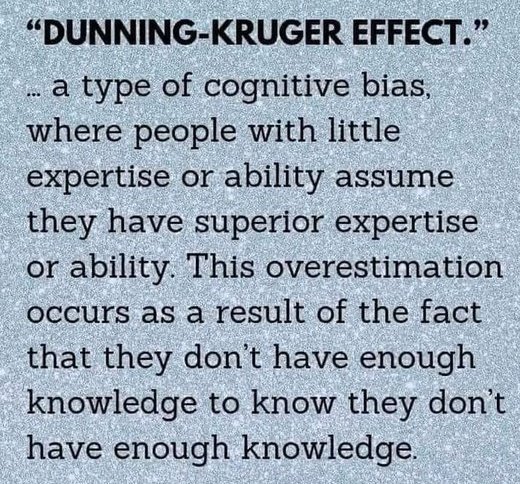
The Very Different Ways of Yahweh and Satan
One thing that becomes clear immediately upon reading this and similar segments is that neither Yahweh, nor Satan, act alone, and for entirely different reasons. Yahweh chooses to act through others to enable them to grow whereas Satan, like the head of a crime syndicate, acts through others in order to remain concealed. As in the world of politics and in the underworld of criminals, so we find similar goings-on in the spiritual dimension: the ultimate powers of darkness prefer not to show themaselves but to act through others. They choose secondary or tertiary intermediaries - sometimes there are a great many more levels than just two or three. What they do is give some of the power and resources to the levels immediate beneath them and back them up whenever necessary. This is why when scandals break in the news, the exposés almost enver go all the way to the top. Thus crooks are able to cover themselves and set up their underlings as the 'fall guys' when things go wrong, leaving those in the upper echelons free to continue their evil practices undetected and unrestrained. With all the exposés going on in the world today, we are perhaps seeing more of the underworld than at any time in history, particularly in the spiritual realm.
Conspiracies, Random Events or Both?
As we all know from all we see going on in the world now, it's easy to invent conspiracy theories about everything, and to see hidden influences at work that aren't necessarily there. It's a fact that some of the things we like to think of as conspiracies are little more than random events. But - and this is where the wicked people are able to score and remain undetected still - it is just as easy, and dangerous, to imagine that all - or nearly all - events are proceeding in a purely random fashion when, in fact, there are powers, forces, and energies propelling them in one particular direction. It's just as easy - and dangerous - to invent imaginary conspiracy theories as it is to deny they exist at all. Go to any period of history and you will see people taking, more or less, one of three positions - two of them extreme and one balanced. Not that we should always default to 'balance' necessarily - sometimes events are more random than the result of conspiracy, and sometimes it's the other way round. The impact craters on the moon are likely all random but some meteorites and asterois may have been diverted by Yahweh's supernatural intervention in the past to prevent our satelite being destroyed or its orbit unduly perturbed for the sake of life down here on earth. All too often criminals dismiss 'conspiracy theories' as ridiculous (and even dangerous) in order to conceal their activities, and conspiracy theorists dismiss every explanation of events that may be entirely random and innocent. Beware of both extremes but don't assume that you must always find a balance either because 'neutrality' can be deadly when 'taking sides' desperately matters. (Actually, I'm not sure anyone is ever truly neutral...Switzerland and Sweden certainly weren't in the Second World War).
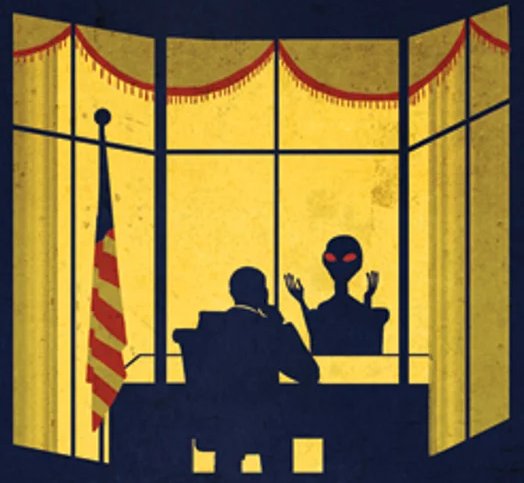 Distinguishing between conspiracy and randomness
Distinguishing between conspiracy and randomness
The Importance of Daniel 7 to First Century Believers
Nowadays in the materialist West particularly we all too readily talk of 'forces' or 'powers' such as 'economic forces' and 'cultural pressures' but ancient Israelites used more vivid language. Today's section, as I'm sure you're by now very aware, draws heavily on a biblical passage that was very popular (and therefore widely known) in the first century, namely Daniel 7. John presupposes, therefore, that his readers know all about Daniel 7 (together with chapters 2 and 9) and therefore it is encumbant on us to know them well too if we want to get the most out of particularly this segment but also other parts of the Book of Revelation. Without them we're sure to misinterpret Revelation. We don't have time to read through them now so please familiarise yourself with them like the good Bereans we're supposed to be.
Finding Out What's Going on in One's Own Time
In the first century, many believed that these three chapters of Daniel predicted the overthrow of pagan empire and the ascent to power of Yahweh's people, Israel...or at least the righteous within Israel. People intensely studied Daniel 7 back then in the hope for finding clues as to what exactly what was going on in their day. Fresh expositions of it were offered which is how the apocryphal book called 4 Ezra (or 2 Esdras) came into existence, books that were written, not in Ezra's day, but after the fall of Jerusalem (AD 70) toward the end of the first century. Yah'shua (Jesus) Himself made chapter 7 of Daniel one of the key themes of His understanding of his own rôle in Yahweh's purposes, since He's mentioned in it, another very good reason why we should become familiar with it.
The Four Beasts of Daniel 7
You see, in Daniel 7 there are four beasts or monsters that come up out of the sea. The first of these is a winged lion. The second is a bear with three tusks (or ribs) in its mouth. The third is a leopard with four wings and four heads. And then, finally, comes the fourth, greater and more terrible than the first three beasts, with iron teeth and bronze claws - it has ten horms, with a further, eleventh, little horn growing up beside them.
The Four Successive Earthly Kingdoms
The interpretation of these four beasts of Daniel 7 is well known so we don't need to seek revelation or speculate. They represent four kingdoms, the fourth of which in particular will become a great and brutal world empire. The horns represent different kings, the last of which will make war against Elohim's (God's) people and blaspheme Yahweh Himself. Then comes the great reversal: 'the Ancient of Days', Yahweh (not Adam as Mormons teach) takes His seat for a court hearing, sitting in condemnation over the fourth and last great beast and destroying his power, giving it instead to the 'one like a Son of Man' (Yah'shua/Jesus) who comes to be presented before the Ancient of Days and to receive an aeon- or age-long [1], universal sovereignty.
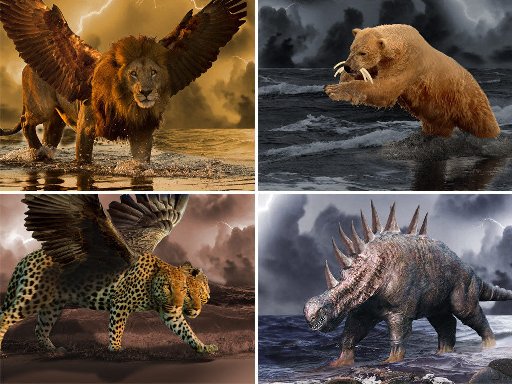 The four beasts of the Book of Daniel
The four beasts of the Book of Daniel
The Importance of Historical Critical-Realism for Exegesis
So in reading Revelation 13:1-10 there can be absolutely no doubt that John has Daniel 7 firmly in mind; and equally, there is no question, either, how he and many in his day were reading it. This segment, then, is a perfect example of how the historical or critical-realist method of scriptural interpretation has to be correct. Neither John nor his first century readers were interested in actual 'monsters' - not science-fictiony monsters crawling up out of the Mediterranean Sea (or 'West Sea' in Israelite geography) to attack the Holy Land. John and his readers are here interested only in the earthly reality which these beasts or monsters represent or symbolise. And by the first century their identification was very easy. John's single monster has telescoped Daniels' four into one - part leopard, part bear and part lion, with 10 horns and 7 heads. Daniel's fourth beast, and John's monstrous creature, as you have by now already guessed or already knew, is ROME.
The Dark Power of Pagan Empire Demanding Worship & Compliance
In the more general sense (because there are always particular and general aspects of a prophecy), the first beast of John 13 is the dark power of pagan empire, straddling the earth, crushing everything in its path, blaspheming other gods who get in the way so that it alone (and the Dragon, Satan, who has given it its power) may be properly worshipped.
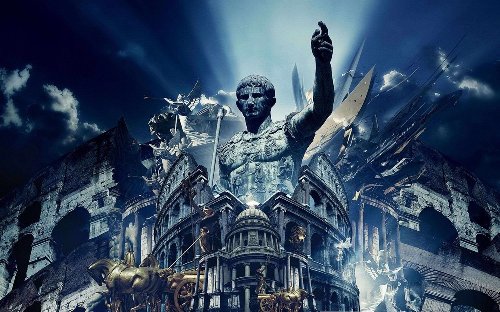 Caesar as the dark power of pagan empire demands to be worshipped
Caesar as the dark power of pagan empire demands to be worshipped
Pergamum as the Seat or Temple of Satan
This is a reason why Pergamum was described in Revelation 2:13 as "where satan lives" (NRSV), "where the throne of haSatan (the Satan) is" (HRV) or "where Satan's throne is" (ESV). Pergamum was the centre of imperial rule and cult, and John sees behind the pomp and purple to the dark spiritual reality of satanic rule which has enabled the empire to impose itself across so much of the world. Rome is the obvious and only 'beast' or 'monster' candidate in the first century AD. But the phenomenon of heartless, dehumanised pagan empire, sadly, did not end with the decline and demise of Rome. That is why the sharp relevance of all this for John's own readers remains, in a different guise, for other readers to this very day. We are all under 'The Empire' to one degree or another and in every age.
Identifying the Four Beasts of Daniel 7
So in the very general sense, then, this beast refers to all pagan empires everywhere in earth's history, but specifically to the Roman Empire. In Daniel, chapters 4 to 7, four separate empires are in view that come one after the other:
- 1. The lion with the eagle's wings is a cherub symbolising the Neo-Babylonian Empire;
- 2. The bear raised up on one of its sides, refers to the superior status of the Persians in the Medo-Persian federation, with the three ribs representing its three principal conquests of Lydia (546 BC), Babylon (359 BC) and Egypt (525 BC);
- 3. The leopard with four wings represents the speedy conquests of Alexander the Great of Macedonia (334-330 BC), and the four heads correspond to the four main divisions into which his empire fell after his death in 323 BC - namely, Macedon and Greece (under Antipater and Cassander), Thrace and Asia Minor (under Lysimachus), Syria (under Seleucus II), the Holy Land and Egypt (under Ptolemy II); and
- 4. The fourth unnamed beast with its irresistable power and surpassing all its predecessors, clearly points to the Roman Empire, with its ten horns corresponding to the ten toes of Daniel 2:41-41 - the 10 horns simply symbolise the comprehensiveness of the beast's sphere of authority, with the 'little horn' representing the spirit of anti-messiah or anti-christ and/or a world power sharing in the characteristics of the antichrist.
The Emerging Global Roman Power
Rome was not a global power in the first century AD but it almost is today. Today it is split between NATO (in reality, the USA with its vassal, the European Union and indeed the whole West) or the Western Roman Empire; and Russia (the Eastern Roman Empire corresponding to Byzantium), with China still preventing the Roman system from going global. Since the time of Daniel's fourth beast, Rome has always existed in one form or another (including the Roman Catholic Church and the Catholic Holy Roman Empire) but as I have talked extensively about this before at some length, I'll not go into the details now.
Satan's Seat in Berlin
You'll perhaps understand why I lay heavy emphasis on the 'big picture' all the time and why I don't just focus on specfic events in history. For John's readers, this first Beast is Rome - no question of that. Pergamum, as I said, was an imperial cult centre at the time which we talked a lot about when we studied the Christian/Messianic congregation there. The 'Seat of Satan' was an actual place, a temple building, which was excavated and brought by Kaiser Wilhelm II to Berlin, bringing a curse to Germany and no doubt contributing to its defeat in the First World War. It remained in Berlin during the decadent Weimar Republic and the totalitarian nazi régime of Adolf Hitler, bringing both to an untimely end. The Soviet Union dismantled it after 1945 and took it to Russia as a spoil of war where it caused yet more trouble, returning it eventually to East Germany (DDR) which saw that nation's collapse too, and which then was annexed into a United Germany which has seen that nation in economic decline ever since, along with the European Union and its €uro currency which it dominates: today (2023) Germany is on the verge of industrial collapse as a result of the covert NATO-driven conflict in Ukraine.
 Satan's seat/throne from Pergamum has been in Berlin for a century
Satan's seat/throne from Pergamum has been in Berlin for a century
The Beast's Near Fatal Wound
Let me now, to end, draw your attention to verse 3 because it's a good illustration of a particular feature of Roman rule in the second half of the first century that may not be immediately obvious to us. Here's where a little knowledge about Roman history will help us understand this passage better which reads:
"One of the heads [of the beast/monster] appeared to have been slaughtered and killed, but its fatal wound had been healed. The whole earth was awed and astonished by the monster (beast)" (Rev.13:3, KNT).
The First Century Historical Experience - Nero
Now I don't know what interpretation you have heard of this passage. I have heard dozens of them, the most recent of which were the attempted assassinations of US President Ronald Reagan and Pope John Paul II. We will not go there or to the attempted assassinations of Stalin and Hitler. We will, instead, go back to the first century AD where we must start. So let me give you a very short history lesson. The ancient Roman republic had become an empire under Augustus, a hundred or so years before John wrote Revelation, after the murder of his adopted father Julius Caesar in 44 BC and the resulting civil wars. But with the reign, and then the death, of Nero, you might be forgiven for believing that the precarious, self-glorifying, top-heavy empire would come crashing down under its own weight. And for sure, the year after Nero's death in AD 69 must have looked like a mortal wound to the whole beastly Roman system, with four would-be emperors in quick succession marching on Rome, killing their enemies, claiming the crown, and then - except for the last one - being killed in turn by the next army to arrive. Galba, Otho and Vitellius came and went; Vespasian came, and stayed. Within months, his son and heir, Titus, completed the military task on which Vespasian had been engaged before his troops encouraged him to go for the big prize. Titus' legions destroyed Jerusalem, burning the Temple to the ground in AD 70. To many observers in Judea it must have seemed like the end of the world.
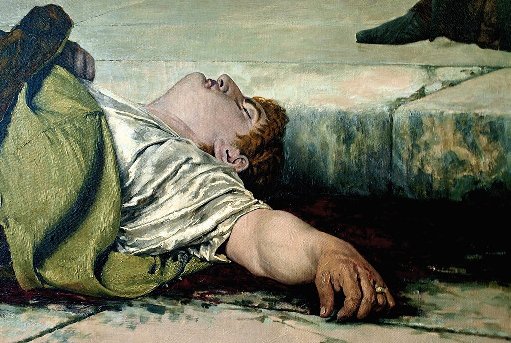 Did Nero fulfil Revelation 13:3 or was his death a type only?
Did Nero fulfil Revelation 13:3 or was his death a type only?
The Central Life-and-Death Issue
Meanwhile, rumours were being circulated that Nero hadn't died after all - or, alternatively, that he had indeed died but had then come back to life. Several would-be 'Nero-alive-again' leaders emerged, and although none lasted long, the rumour persisted. 'He was, is not, but is come,' is what they said, which sounds a lot like Revelation 17:8 which says, "The beast, which you saw, once was, now is not, and will come up out of the Abyss and go to his destruction" (NIV). This might be what John was referring to when he says that one of the beast's heads appeared to have been killed, but it's fatal wound had been healed (v.3), or at least provided a stepping stone to what he was actually referring to that we'll discuss next week. But the central and important feature, which all his readers would have recognised at once, is that the beast claimed worship, and shared that worship with the dark pagan gods that stood behind it. You just have to glance at the Roman coins of the time to see that one emperor after another not only claimed to be 'son of god' but was dressed in the garb traditionally associated with this or that pagan divinity. This, for the first century believers, was the life-and-death issue that confronted them.
Worship the Beast or Die
And, of course, once the emperor becomes a god, there is no room for other gods. That local and tribal deities continue to be worshipped was acceptable to the Caesars so long as everyone also worshipped the new god, Rome and its emperor. But if anyone refused - as Christians/Messianics knew they were bound to refuse - then they would find themselves on a collision course. Like Daniel and his friends in the early chapters of the book from which John drew so richly, all the world seemed to be worshipping this beast. Only the faithful few, here described in terms of their names being in the Lamb's Book of Life, refuse to do so. That's the big issue here!
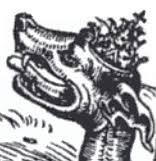
Patient Endurance and Faithfulness
The last verse of this segment is very sobering:
"If anyone is to be taken captive, into captivity they will go. If anyone is to be killed with the sword, with the sword they will be killed. This is a summonse for Elohim's (God's) qadosh (holy, set-apart) people to be patient and have faith" (Rev.13:10, KNT).
Or in the words of Today's English Version:
"This calls for [patient] endurance and faith[fulfness] on the part of Elohim's (God's) people" (v.10b, TEV).
Whatever our fate is to be for the sake of being faithful and true, we must have courage and not waiver, for this is our ultimate test of love for Yahweh and His Messiah (Christ). Some believers are going to be imprisoned for their faith and some are going to be martyred. That's just the way it is. The proper response is not to kick and scream, but to hold firm to patient endurance and emunah (faith), as Paul did:
"For to me, to live is Christ and to die is gain" (Phil.1:21, NIV).
Faithful Witness to the Death
Chapter 11 meant what it said. It is through the faithful witness unto death that the Lamb wins the victory, that Elohim's (God's) Kingdom replaces the kingdom of the beast, that the dragon himself is to lose the last remains of his power. How this is to be worked out we have yet to see. But what John is doing at this point is sketching the larger, darker picture within which the little local struggles of the messianic communities (churches) must be seen if they are to make sense, and if the challenge to uncompromising witness is to make sense. Only when we remember the dragon and the beast do we realise what a deadly serious thing Christian/Messianic faith, patience and holiness really is.
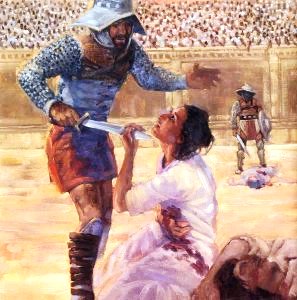 Faithful witness even unto death
Faithful witness even unto death
Conclusion
Next week we'll unpack this even further, as I said. In the meantime, think soberly upon the words you have heard now we have reached the final choice: all or nothing. Peace be to you all in Yah'shua (Jesus) our Messiah! Amen.
Continued in Part 49
Endnotes
[1] Not 'everlasting' or 'eternal' as most English translations would have it because the translators either don't understand (or don't want to admit) how Hebrew time works (because it overturns so many church traditions). As Paul himself testifies in 1 Corinthians 15:24-25 this messianic kingdom isn't 'forever' because there is a point in time when this designated authority is returned to the Father so that Yahweh becomes 'all in all': the Son is a plenipotentiary.
Acknowledgements
[1] Tom Wright, Revelation for Everyone - The New Testament for Everyone Commentary Series, Vol.19 (SPCK, London: 2011)
[2] E.W.Bullinger*, Commentary on Revelation (Kregel Classics, Grand Rapids, Michihan: 1984)
[3] David H. Stern, Jewish New Testament Commentary (JNT Publications, Clarksville, Maryland: 1992)
[4] ESV Study Bible (Crossway, Wheaton, Illinois: 2011)
[5] The NIV Study Bible (Zondervan, Grand Rapids, Michigan: 1995)
[6] Ed. J.R.Dummelow, A Commentary on the Holy Bible (MacMillan, London: 1909)
[7] David Pawson, Unlocking the Bible: A Unique Overview of the Whole Bible (Collins, London: 2007)
*E.W.Bullinger was a brilliant Anglican clergyman and scholar whose works merit careful study by serious students of the Bible. He was, however, seriously in error in at least three main areas, namely, (1) he believed the 'Church' has been raptured before the Book of Revelation opens, (2) he believed that the 7 churches in Revelation 2-3 are 7, literal Jewish churches or assemblies yet to come, and (3) he believed in a pre-tribulation, pre-millennial rapture.
APPENDIX
SYNOPSIS OF REVELATION 6-16
The Seven Seals
- 1. White horse - military aggression
- 2. Red horse - bloodshed
- 3. Black horse - famine
- 4. Pale Green/Blanched/Pallid/Sickly-looking horse - disease, epidemics
- 5. Persecution & prayer
- 6. Tremour & terror
INTERLUDE I (Ch.7)
(The 144,000 Redeemed)
- 7. Silence in heaven, listening to prayers which are then answered in a final catastrophe: a severe earthquake I
The Seven Trumpets/Shofars
- 1. Scorched earth
- 2. Polluted sea
- 3. Contaminated water
- 4. Reduced sunlight
- 5. Insects and plague (for five months) (1st Woe)
- 6. Oriental invasion (200 million army) (2nd Woe)
INTERLUDE II (Ch.10-11)
(The Malak with the Little Scroll)
(The Two Witnesses)
- 7. The Kingdom comes, the world is taken over by Yahweh & Yah'shua (Jesus) after a severe earthquake II (3rd Woe)
INTERLUDE III (Ch.13-14)
(The First & Second Beasts)
(The Lamb & the 144,000)
(The Messages of the Three Malakim)
The Seven Bowls/Vials
- 1. Boils on the skin
- 2. Blood in the sea
- 3. Blood from the springs
- 4. Burning by the sun
- 5. Darkness
- 6. Armageddon
- 7. Hailstorm (OB 368:11-12) and severe earthquake III, leading to international collapse
 Click the image for the whole Series
Click the image for the whole Series

 V401
V401
|


